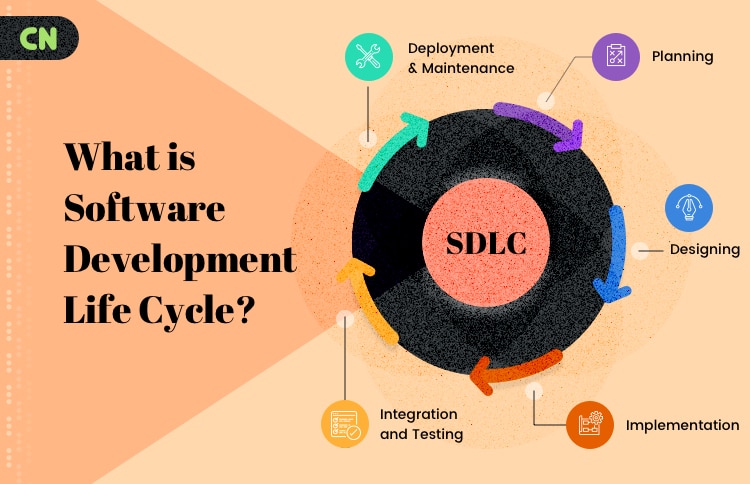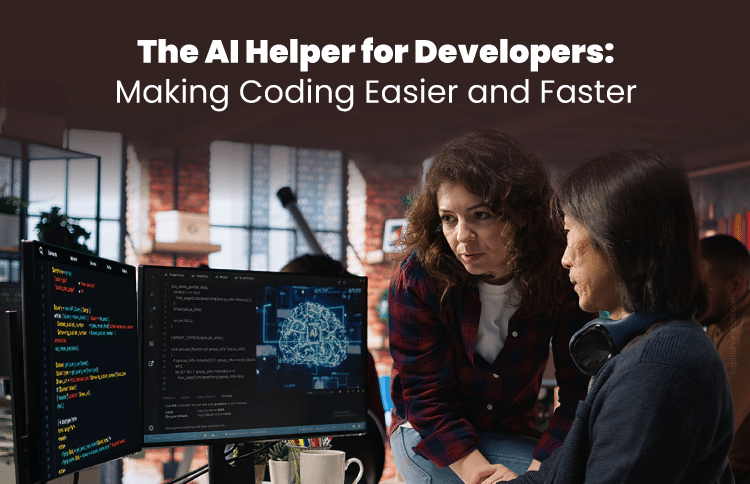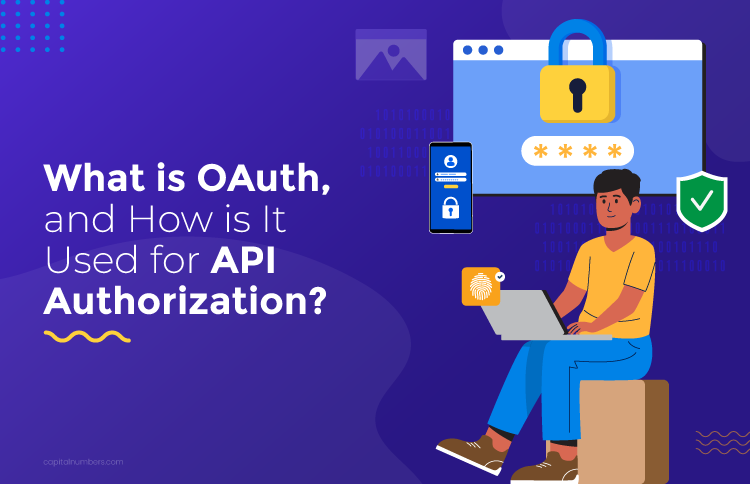What is Software Development Life Cycle?
Table of Contents
When it comes to developing a high-quality and functional software product, following a structured approach is essential. That’s where the Software Development Life Cycle (SDLC) comes into play. SDLC provides a clear framework, guiding teams through every step of the development process, from initial planning to final deployment and maintenance.
In custom software development, each SDLC phase is carefully structured to address specific business needs. This organized approach helps minimize risks, manage resources effectively, and ensure the final product meets unique business goals and user requirements.
In this blog, we’ll explore the key phases of the SDLC, review the different methodologies teams use, and explain how to choose the right model for your project.
Why is SDLC Important?
The Software Development Life Cycle (SDLC) is a structured process that helps teams deliver high-quality software efficiently. It breaks down development into clear stages, providing a roadmap to manage resources, risks, and goals effectively.
- Organized Approach: SDLC divides development into well-defined phases, making complex projects more manageable.
- Quality Assurance: Built-in checks at each stage help ensure the software meets high standards.
- Risk Reduction: Early identification of potential issues minimizes costly errors.
- Resource Efficiency: Time, budget, and team resources are allocated and tracked effectively.
- Goal Alignment: SDLC ensures software meets both business objectives and user needs.
How Does SDLC Work?
The Software Development Life Cycle (SDLC) consists of multiple phases, each producing specific deliverables that feed into the next. This step-by-step approach ensures a smooth, organized progression toward a successful final product. Let’s explore each of these phases in detail below.
1. Plan
The planning stage is the foundation of the Software Development Life Cycle (SDLC). Here, the project’s scope, objectives, and requirements are gathered from stakeholders. Developers, business analysts, and project managers work together to understand the end goals, user needs, and technical requirements.
The key tasks include defining deliverables, creating a timeline, setting budgets, and assigning resources. This phase also identifies potential risks and outlines mitigation strategies. The goal is to ensure everyone is aligned before moving to the next phase, reducing the chance of miscommunication or scope changes later.
2. Design
The design phase focuses on translating the requirements gathered during planning into a detailed blueprint for the software. This stage involves defining the system architecture, user interface (UI), data models, and database structures. High-level design focuses on the system’s overall structure, while low-level design breaks it down into individual components and interactions.
This phase provides developers with a clear roadmap to follow during coding. Key deliverables from this stage include system architecture diagrams, flowcharts, and design documents, ensuring all components align with the project’s goals.
3. Develop
Coding begins in this stage. Developers build the software based on the detailed designs and architecture created in the previous phase. This is where the core functionality, user interface, and backend systems come to life. Programmers write, test, and debug the code in small sections to ensure everything works as expected.
Collaboration between teams is essential, especially if multiple developers work on different components. The outcome of this phase is functional software that meets the predefined requirements and is ready to be tested for any issues.
4. Test
Once development is complete, the testing phase begins. The software undergoes various types of testing, such as unit testing (UT), performance testing (PT), integration testing (IT), and user acceptance testing (UAT), to identify bugs, errors, and inconsistencies.
The goal is to ensure the software functions as intended and meets the requirements. Testers and quality assurance (QA) teams verify each feature, interaction, and system performance to guarantee stability, usability, and security. Any issues identified during testing are reported back to developers for fixes. Thorough testing is critical to delivering a reliable, high-quality product.
5. Deploy
The deployment stage is when the software is officially released into the production environment and made available to users. This phase involves installing and configuring the software on servers or cloud environments. Before deployment, a final round of checks is conducted to ensure the software is stable and ready for live use.
Sometimes, software is deployed in stages (e.g., beta versions) to gather user feedback before the full release. Once deployed, the system is monitored closely to ensure it operates smoothly and resolves any issues.
6. Maintenance
After the software is deployed, the maintenance phase begins. This stage involves ongoing support, monitoring, and updating the software to keep it running smoothly. It includes fixing bugs that may appear post-deployment, improving performance, and adding new features based on user feedback.
Maintenance ensures the software remains updated with evolving technologies and user needs. It’s a critical phase, as it keeps the product functional, secure, and relevant over time, ensuring long-term success and user satisfaction.
What are SDLC Methodologies?
Software Development Life Cycle (SDLC) methodologies refer to different approaches or models teams use to guide software development projects. These methodologies define how teams plan, develop, test, and deploy software. Here are some of the most commonly used SDLC methodologies:
1. Waterfall Methodology
The Waterfall model is one of the earliest and most straightforward SDLC methodologies. It follows a linear, step-by-step approach where each phase must be completed before moving to the next. This methodology is ideal for projects with well-defined requirements that are unlikely to change. However, it’s less flexible when responding to changes later in the development cycle.
- Phases are completed sequentially.
- Best for projects with clear, unchanging requirements.
- Difficult to adapt to changes mid-project.
2. Agile Methodology
Agile is a popular SDLC methodology that focuses on flexibility and iterative development. Projects are broken down into small, manageable units called sprints, allowing teams to develop, test, and release features incrementally. As adaptable to changing requirements, Agile is ideal for rapid software development. Also, it ensures continuous collaboration between developers and stakeholders.
- Focuses on iterative, incremental development.
- Highly flexible, allowing for changes throughout the project.
- Encourages ongoing collaboration and feedback.
3. Iterative Methodology
The Iterative model involves developing software in small cycles. After each iteration, the product is reviewed, and feedback is incorporated into the next cycle. This allows for gradual improvement and adjustment as the project progresses. It is suitable for projects that evolve as requirements change and offers a balanced approach between planning and flexibility.
- Develops software in small, repeated cycles.
- Feedback is incorporated after each iteration.
- Offers flexibility for evolving requirements.
4. V-Model (Verification and Validation)
The V-Model is an extension of the Waterfall model, focusing heavily on testing. Each development phase has a corresponding testing phase, ensuring that every part of the system is tested thoroughly before proceeding. This model works best in projects where system accuracy is critical, such as those in the healthcare or aerospace industries:
- Pairs each development stage with a testing phase.
- Ensures thorough testing at every stage.
- Ideal for projects where quality is paramount.
5. Spiral Model
The Spiral model combines iterative development with risk analysis. It involves repeating development activities, emphasizing identifying and mitigating risks in each cycle. This model is suited for large, complex projects where risk management is a key concern.
- Combines iterative development with risk management.
- Allows for continuous risk assessment and mitigation.
- Best for complex projects with high risks.
6. DevOps Methodology
DevOps focuses on collaboration between development and operations teams, automating workflows, and continuous integration/continuous delivery (CI/CD). The goal is to improve efficiency and shorten the development lifecycle while maintaining high-quality software. By emphasizing frequent releases and fast feedback responses, DevOps accelerates software delivery.
- Encourages collaboration between development and operations.
- Automates workflows for faster delivery.
- Focuses on continuous integration and continuous delivery (CI/CD).
You May Also Read: Adaptive Software Development: The Agile Approach for Modern Projects
How Does SDLC Address Security?
The Software Development Life Cycle (SDLC) integrates security measures at every stage to keep applications safe. With approaches like DevSecOps, security becomes a shared responsibility across the development process:
- Planning: Identify security needs and potential risks early on.
- Design: Implement secure architecture and encryption protocols.
- Development: Use secure coding practices to prevent vulnerabilities.
- Testing: Conduct security tests, such as penetration and vulnerability assessments.
- Deployment and Maintenance: Regularly monitor for breaches, apply patches, and update the software to stay secure.
This approach ensures security is built into the entire lifecycle.
How to Choose an SDLC Model?
There are several types of SDLC models available, and there is no one-size-fits-all solution. So, one model that is perfect for one may not be the right choice for another one. Choosing the right SDLC model depends on your project’s needs, goals, and complexity. Here are key factors to consider:
Project Requirements:
- Clear Requirements: If your project has well-defined, stable requirements, consider using Waterfall or V-Model.
- Changing Requirements: For evolving or unclear requirements, use flexible models like Agile or Iterative.
Project Size and Complexity:
- Small Projects: For smaller, straightforward projects, Waterfall may be a good fit.
- Large Projects: For complex, large-scale projects, use Agile, Spiral, or DevOps to handle flexibility.
Team Expertise:
- Experienced Teams: If your team is familiar with iterative approaches, Agile will work well.
- Less Experienced Teams: For teams requiring a more organized approach, Waterfall or V-Model may be ideal.
Client Involvement:
- Frequent Client Feedback: Use Agile if your project needs regular feedback.
- Minimal Client Involvement: Choose the Waterfall model if client involvement is only needed at key milestones.
Time and Budget Constraints:
- Fixed Time and Budget: If you have strict time and budget limits, Waterfall or V-Model are suitable options.
- Flexible Time and Budget: Use Agile or Spiral if there’s flexibility in time and budget.
Risk Management:
- High-Risk Projects: Spiral is ideal for highly uncertain projects due to its focus on continuous risk analysis.
- Low-Risk Projects: Choose Waterfall if the project has minimal risks.
Product Release Timeline:
- Quick Release Needed: If you need to deliver quickly, use Agile for fast product releases.
- Longer Development Time: For projects with no rush, Waterfall or V-Model work well.
Maintenance and Support:
- Long-Term Maintenance: If ongoing support is needed, choose Agile or DevOps for continuous updates.
- Minimal Maintenance: For projects with little need for future updates, Waterfall or V-Model is suitable.
Stakeholder Expectations:
- High Stakeholder Engagement: Use Agile if stakeholders want regular updates and involvement.
- Low Stakeholder Engagement: Choose Waterfall or V-Model if stakeholders prefer involvement only at key stages.
You May Also Read: Understanding the Cost of Software Development: A Business Owner’s Guide
Bottom Line
The Software Development Life Cycle (SDLC) is a vital process that helps teams deliver high-quality software by ensuring each phase is structured and aligned with project goals. By following SDLC, teams can reduce risks, manage resources effectively, and ensure that the final product meets business requirements and user expectations. This organized approach is essential for any successful software development project.
Choosing the right SDLC methodology is crucial. Whether Agile, Waterfall, or another model, selecting the best fit for your project’s size, complexity, and needs will set the foundation for success. A well-chosen SDLC approach helps teams work efficiently, avoid unnecessary delays, and deliver reliable, scalable solutions.















